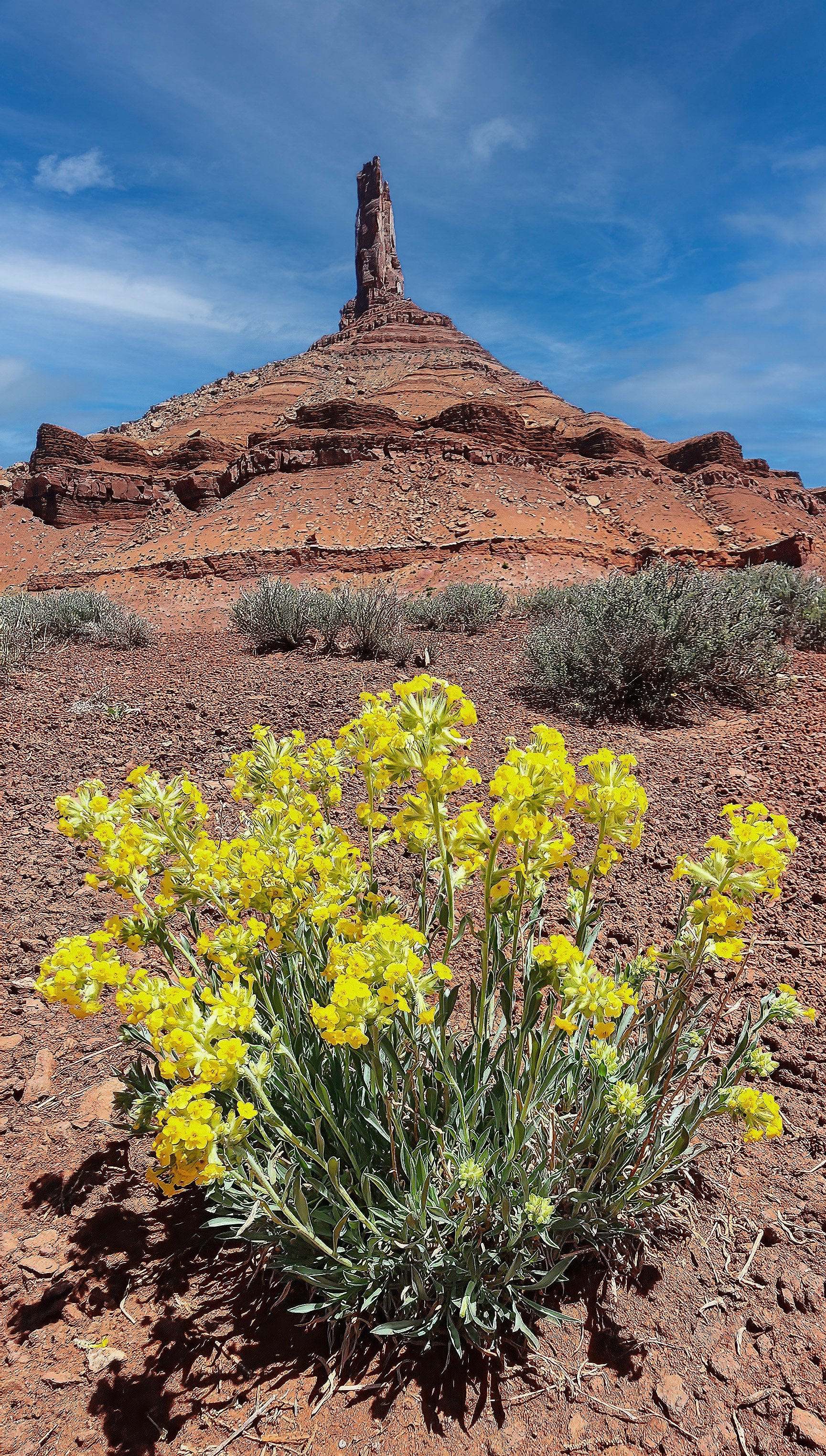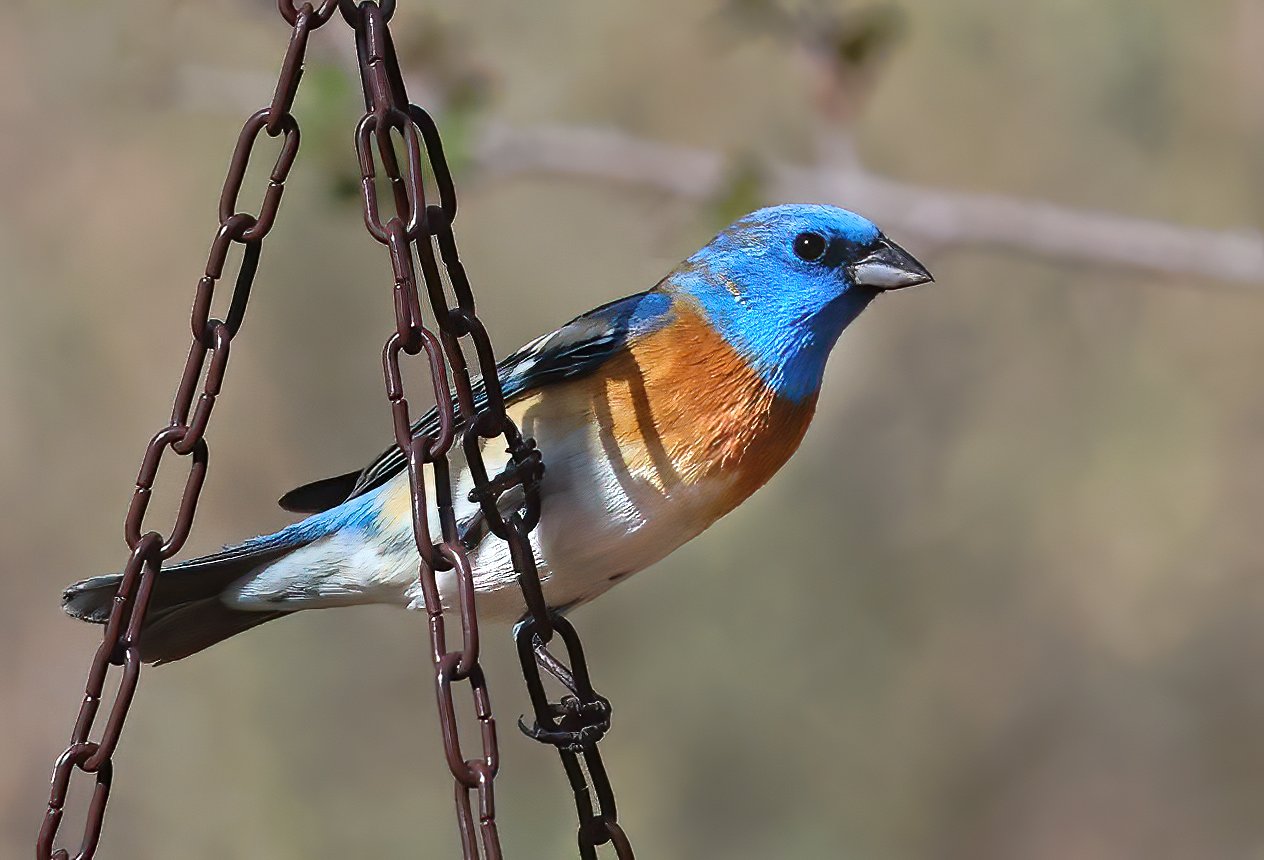all fluffed up and no place to go.
Mourning Dove (Zenaida macroura).
all fluffed up and no place to go.


Mourning Dove (Zenaida macroura).
in Castle Valley is attracting the tiny pollinating bees and I’m on the lookout for their ground-dwelling hives.

Globe mallow bee (Diadasia diminuta) on the common globemallow flower (Sphaeralcea coccinea).

UPDATE: Here’s a shot taken this evening as a bee settles in for a slumber as the blossom closes for the night.
in Castle Valley, Utah. Truly a spectacular spectacle of nature.

Nakedstem sunray (Enceliopsis nudicaulis).

Sego lily (Calochortus nuttallii).
takes its turn with the pollinators - in this case, hummingbirds - blossoming with vibrant scarlet flowers. Hands down my favorite of the spring bloom.

Claret cup cactus (Echinocereus triglochidiatus).

this afternoon.
(Click on image to enlarge.)
but a bit of a bully at the feeder.

Adult male Black-headed Grosbeak (Pheucticus melanocephalus).
of a variety of wildflowers and shrubs following the very wet spring. It’s quite glorious.

Harriman’s yucca, also known as narrow-leaf yucca (Yucca harrimaniae).

Whipple’s fishhook cactus (Sclerocactus whipplei).

Yellow cryptanth (Cryptantha flava).

Cliffrose (Purshia mexicana), incredibly aromatic and sweet-smelling.

Anderson’s larkspur (Delphinium andersonii). Toxic!
by Rory Tyler is nearly finished in production, where we recorded his last poem this morning in Castleton, Utah. The collection of Rory’s stories will be posted on YouTube and I’ll provide a link when they are available. Good stuff.

is the lovely sego lily, now dominating the blooming wildflowers around Round Mountain.

Sego lily (Calochortus nuttallii).


where a rapidly moving cell dropped 0.35" of rain and slammed Castle Valley with 1/4"+ diameter hail in one hour’s time.

Nakedstem sunray (Enceliopsis nudicaulis).
holds some of the best kept secret places in central Utah. Here are some images that were captured during a several day trip with friends this week.

Portion of the extraordinary Buckhorn Wash pictograph panel.

Stormy sunset view of the Little Grand Canyon of the San Rafael River from The Wedge Overlook.


The stunning petroglyphs of the Rochester Panel in the western part of the Swell.

The historic San Rafael “swinging bridge,” built during 1935-1937 by the Civilian Conservation Corps.

Temple Mountain, an important site for uranium mining during the last century.

Little Wild Horse Canyon.
contains a wonderful petroglyph panel, hidden right at the edge of Moab.


Rory and Ellen examining the so-called “Connection Panel” where all key icons are connected by a continuous thread.

Increased contrast in order to see detail on the panel.

The view south across Mill Creek, towards the La Sal Mountains, from the panel’s location.
are regulars at my feeding stations now, and when the sunlight strikes their feathers at the correct angle it appears like bright neon.

Breeding male Lazuli Bunting (Passerina amoena).


at the nape of its neck gives this chunky dove its name.

Eurasian Collared-Dove (Streptopelia decaocto).
at a turbid but moderate pace, with plenty of channel capacity, all the way to its confluence with Castle Creek. Here’s the view upstream from the arroyo at the end of East Pace Lane.
(Click on image to enlarginate.)
after which it is named, one of my spring favorites joins me for morning coffee.

Adult male Lazuli Bunting (Passerina amoena).
Here are a couple of more shots captured later in the afternoon, under more favorable lighting. Quite the handsome fellow.


this spring in Castle Valley, Utah. Placer Creek is flowing all the way to its confluence with Castle Creek low in the valley, a once-a-decade occurrence, and in doing so is losing a large amount of its flow into the coarse, gravelly ground.

View upstream of Placer Creek and its distant headwaters in the Pinhook Valley, to the right (west) of Round Mountain.

View downstream of Placer Creek at the Buchanan Lane crossing.
involves this appropriately named - both common and scientific - poisonous beauty, now in full bloom in Castle Valley. In other words, don’t eat it.

Panicled death camas (Toxicoscordion paniculatum) among the blackbrush (Coleogyne ramosissima).

as I sip my coffee, my ever-present companion Bugs Buddy is up early to join me in greeting the day.

this visitor was caught early this morning at the feeding station.

Evening Grosbeak (Coccothraustes vespertinus), either a female or immature male.